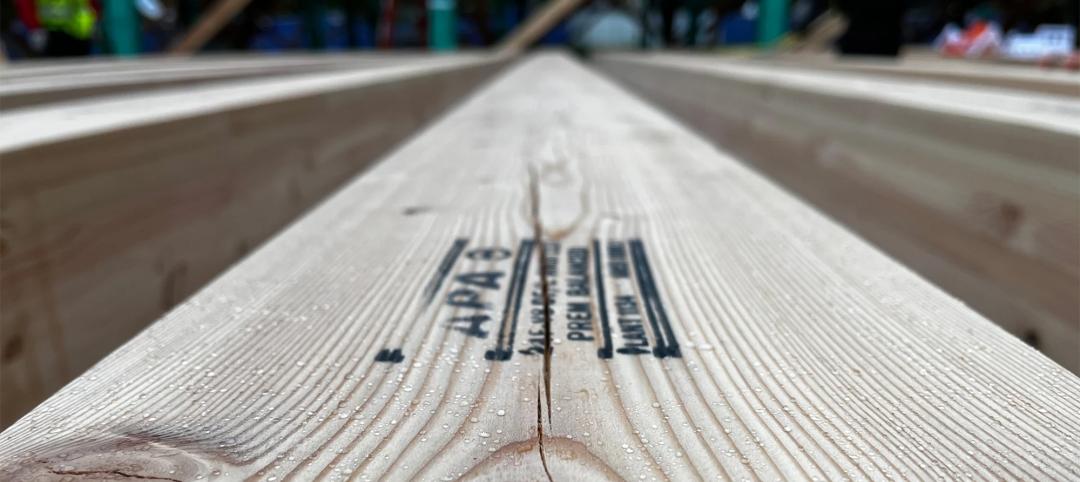Fifty-two weeks. An entire year. That’s how long project teams are having to wait for certain building materials, systems, and equipment in the post-Covid environment. These include critical core-and-shell materials like steel, steel deck, steel joists, and roofing components such as ISO foam board insulation and fasteners. Even readily available “off-the-shelf” products like drywall, metal framing, and paint have lead times. Not to mention near-historic price inflation levels and shipping costs across almost every product category.
Faced with these immense supply chain issues—on top of the ongoing skilled labor shortage—building teams are forced to employ aggressive product procurement tactics to pull off new construction and major reconstruction programs on schedule—and anywhere close to budget. Common strategies include real-time price tracking, product availability analysis during the design and bidding phases, more-optimal project planning (duh!), and sourcing locally, when possible.
Some project teams are looking to eliminate much of the guesswork around product availability and price inflation by employing early bulk-purchasing measures for entire building projects, even multi-build developments. This “buy-and-store” approach to product procurement has worked for several recent healthcare projects led by design and construction giant Haskell, says Denise Muth, Project Director with the firm’s Infrastructure and Transportation group.
ALSO SEE: How building owners and developers can get ahead of the next supply chain disaster
“For one hospital project, it was determined to buy the whole project out from the start and utilize local storage leased by the hospital,” says Muth. “On another project, we accelerated roofing, MEP equipment, elevators, and steel to help jumpstart the lead time process while the balance of design is completed. Depending on the stage of design, our owners are encouraged to purchase the entire project as quickly as possible.”
AEC industry consultant Ryan Bosworth, Principal with Rider Levett Bucknall, urges project teams to take advantage of the glut in vacant or derelict retail stores, especially big boxes, to purchase building products in bulk and warehouse them locally. “Landlords are begging for revenue while they reposition properties,” he says, adding that these spaces are relatively inexpensive to rent and require little build-out.
This bulk-purchasing approach, while effective, does have its obstacles, says Muth, including added front-loaded costs for owners/developers, insurance considerations related to storage facilities, and the risk of changes to specifications or design after materials have been ordered and stored.
Related Stories
Laboratories | Oct 2, 2024
Trends in scientific research environments: Q&A with Flad's Matt McCord
As part of an ongoing series, Matt McCord, AIA, NCARB, LEED AP BD+C, Associate Principal with Flad Architects, discusses the future of the scientific workplace.
Contractors | Oct 1, 2024
Conflict resolution is a critical skill for contractors
Contractors interact with other companies seventeen times a day on average, and nearly half of those interactions (eight) involve conflicts, according to a report by Dodge Construction Network and Dusty Robotics. The study suggests that specialty trade contractors, in particular, rarely experience good resolution from conflicts.
Museums | Oct 1, 2024
UT Dallas opens Morphosis-designed Crow Museum of Asian Art
In Richardson, Tex., the University of Texas at Dallas has opened a second location for the Crow Museum of Asian Art—the first of multiple buildings that will be part of a 12-acre cultural district. When completed, the arts and performance complex, called the Edith and Peter O’Donnell Jr. Athenaeum, will include two museums, a performance hall and music building, a grand plaza, and a dedicated parking structure on the Richardson campus.
Data Centers | Oct 1, 2024
10 biggest impacts to the data center market in 2024–2025
While AI sends the data center market into the stratosphere, the sector’s accelerated growth remains impacted by speed-to-market demands, supply chain issues, and design innovation necessities.
Contractors | Oct 1, 2024
Demographic, societal trends bode poorly for future construction workforce
U.S. employers will soon face “the largest labor shortage the country has ever seen,” according to a report from Lightcast, a labor market data and analysis firm. The problem will be especially acute in fields like plumbing, HVAC, and auto maintenance.
Contractors | Oct 1, 2024
Nonresidential construction spending rises slightly in August 2024
National nonresidential construction spending increased 0.1% in August, according to an Associated Builders and Contractors analysis of data published today by the U.S. Census Bureau. On a seasonally adjusted annualized basis, nonresidential spending totaled $1.22 trillion.
Higher Education | Sep 30, 2024
Studio Gang turns tobacco warehouse into the new home of the University of Kentucky’s College of Design
Studio Gang has completed the Gray Design Building, the new home of the University of Kentucky’s College of Design. In partnership with K. Norman Berry Associates Architects, Studio Gang has turned a former tobacco warehouse into a contemporary facility for interdisciplinary learning and collaboration.
Mass Timber | Sep 26, 2024
5 lessons in water mitigation for mass timber projects
Sustainability leaders from Skanska, RDH, and Polygon share five tips for successful water mitigation in mass timber construction.
Laboratories | Sep 26, 2024
BSL conversions: A cost-efficient method to support high-containment research
Some institutions are creating flexible lab spaces that can operate at a BSL-2 and modulate up to a BSL-3 when the need arises. Here are key aspects to consider when accommodating a rapid modulation between BSL-2 and BSL-3 space.
AEC Tech | Sep 25, 2024
Construction industry report shows increased use of robotics on jobsites
Nearly two-thirds of contractors surveyed, who cited use of robotics on jobsites, are either using monitoring and/or service/labor robotics.

















